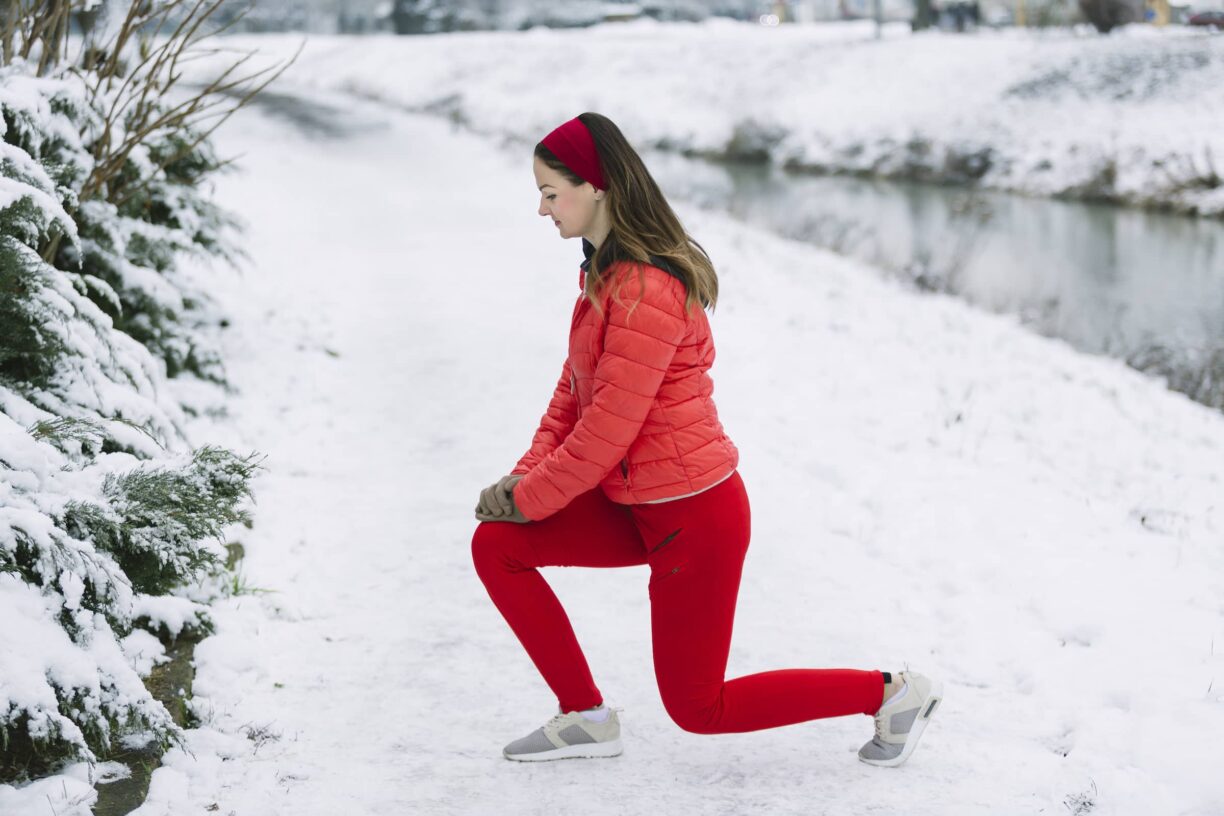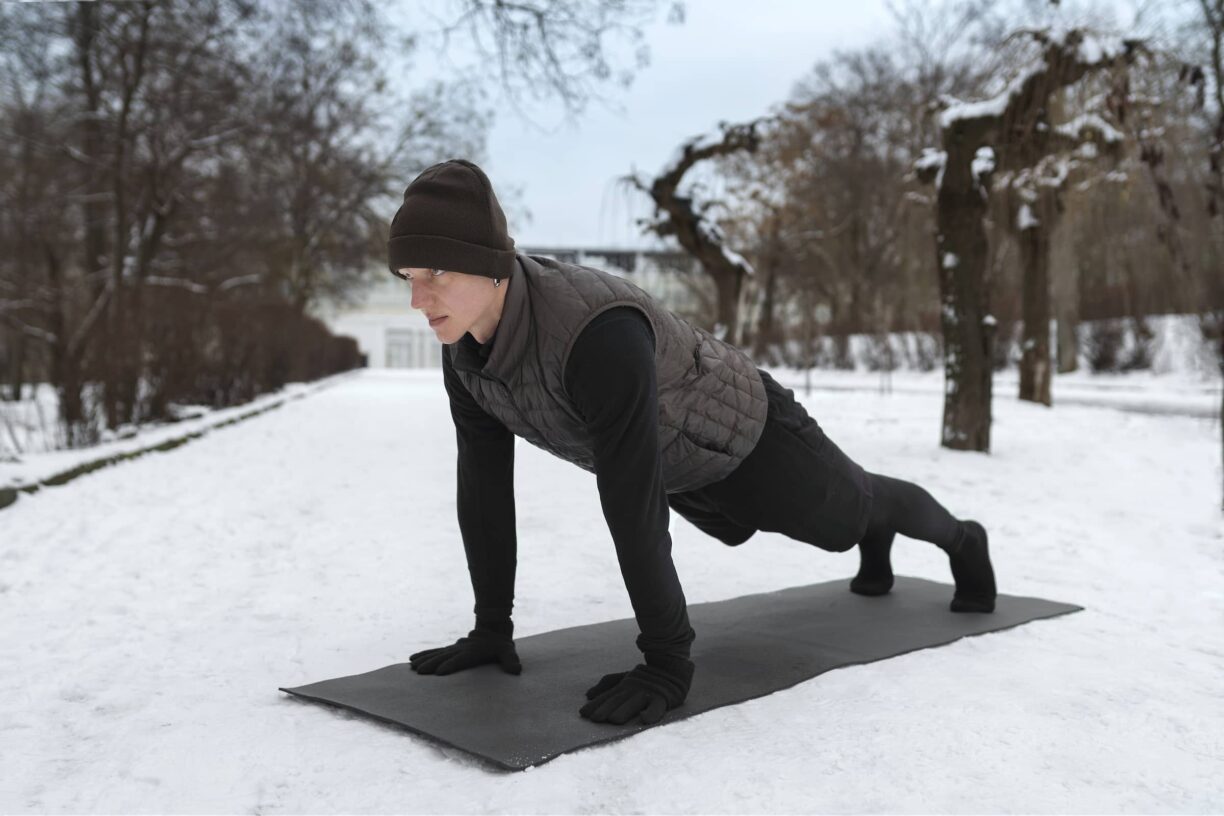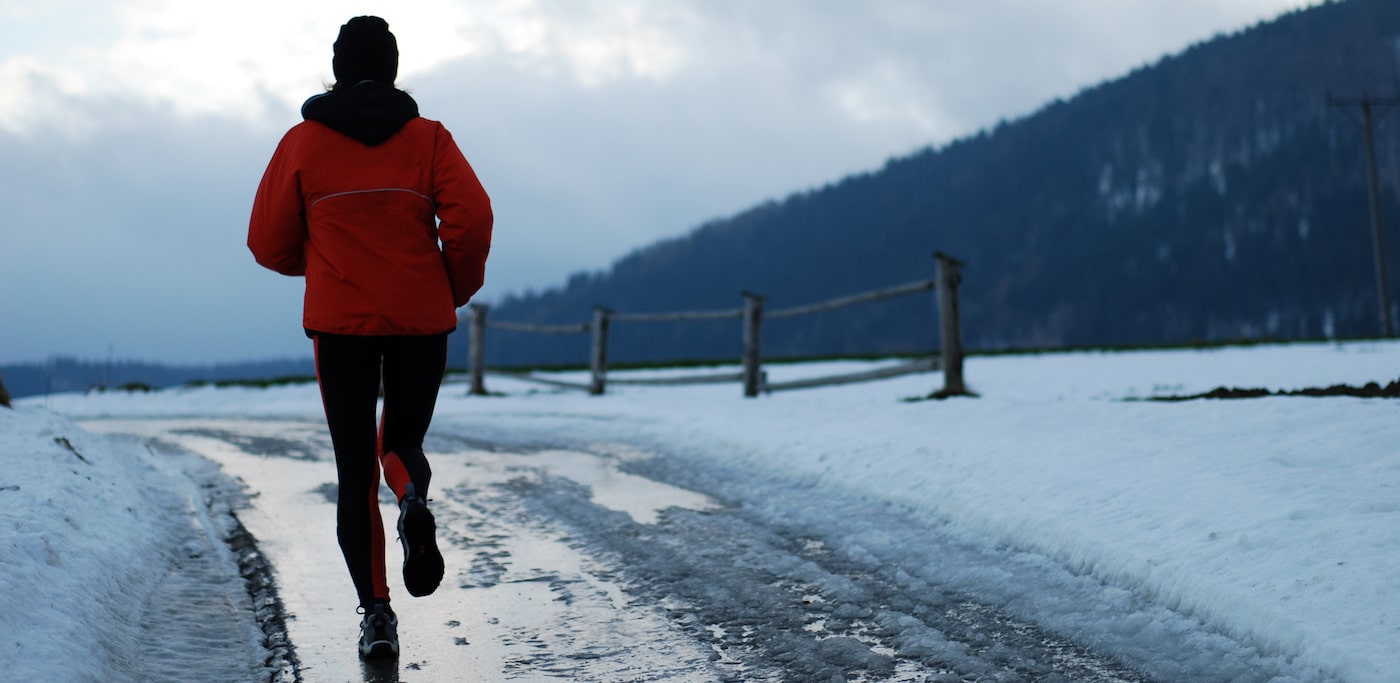As winter sets in, many of us find it challenging to maintain our workout routine. However, with the right mindset and preparation, exercising during the winter season can significantly benefit our physical and mental well-being.
From boosting our immunity to improving our mood, staying active during the winter can help us tackle the season’s challenges more effectively.

Here are my seven key tips to help you stay motivated and safe while working out in winter. So, let’s dive in and explore some crucial tips for designing a safe, productive winter workout plan.
7 Things To Keep In Mind While Working Out In Winter
Layer your clothing appropriately
When working out in winter, one of the most important things to remember is how you layer your clothing. Layering will not only keep you warm, but it can also prevent you from overheating and sweating too much.
Start with a moisture-wicking base layer to keep sweat away, add a middle layer like a fleece or sweater for warmth, and finish with an outer waterproof layer to protect from the elements.
It’s important to choose breathable and flexible fabrics to allow for movement during your workout. Adjust your layers as needed as your body temperature changes during exercise. You can enjoy winter workouts comfortably and safely by layering your clothing properly.
Stay hydrated
Staying hydrated is critical for everyone, especially when engaging in physical activities. During winter, our body readily loses fluids due to the dry and cold air and physical exercise. This makes drinking plenty of water throughout the day even more important.
You can prevent dehydration by drinking adequate water before, during, and after exercise. One of the best ways to know if you are hydrating enough is by monitoring the colour of your urine. If it’s pale yellow or clear, you are hydrated.
However, you need to increase your water intake if it is dark yellow or orange. Dehydration has adverse effects on our performance and overall health. Therefore, carrying a water bottle and sipping water regularly while working out in winter is essential.
Warm up properly before exercising
As the winter months set in, it’s important to remember that proper warm-ups are essential for any workout routine. Many underestimate the significance of properly preparing their bodies for a workout on colder days.
This is because cold weather impacts the body’s ability to provide oxygenated blood to the muscles and can leave you feeling stiff and sluggish if you don’t take the time to warm up.
A proper warm-up routine can increase flexibility and improve overall performance. By taking these guidelines, you can ensure that your wintertime workouts are safe, effective, and enjoyable.
Protect your extremities (hands, feet, ears) from the cold
When exercising in the winter, keeping your extremities in mind is important. The cold weather can be harsh on your hands, feet, and ears, making them susceptible to injury.
Wearing gloves specifically designed for cold weather is important to protect your hands. They not only provide warmth but also ensure that your hands stay dry.
Similarly, investing in good-quality insulated socks for your feet is a great way to keep them warm and dry during workouts.
Lastly, earmuffs or a headband that covers your ears can protect against frostbite and other cold-related injuries. These measures to protect your extremities will allow you to fully enjoy your winter workout without discomfort.
Choose suitable outdoor activities for the season
As the temperatures drop and snow begins to fall, choosing the right outdoor activities can make all the difference in your winter workout routine.
Some great options for the snowy season include cross-country skiing, snowshoeing, and ice skating. These activities can offer a fun and unique way to exercise while enjoying the beauty of winter landscapes.
However, it is important to pay attention to the weather and dress appropriately, as cold temperatures can be dangerous if not properly prepared.
Additionally, it may be helpful to consult a workout professional or trainer to ensure that your winter activities are safe and effective for your individual needs. You can stay active all winter by selecting the right outdoor activities.

Be mindful of icy or wet surfaces
For those who love staying active in the winter, it’s important to remember the potential hazards of icy or wet surfaces. Slips and falls can lead to severe injuries that can damage your workout routine.
One of the best ways to avoid these risks is to wear appropriate footwear designed to provide traction on slippery surfaces.
Another tip is to be mindful of the conditions outside and adjust your workout routine accordingly. For example, if the sidewalks are particularly icy, it might be safer to workout indoors. With these tips in mind, you can stay active and healthy during winter without any unnecessary risks.
Listen to your body and adjust your workout as needed.
During winter, listening to your body and adjusting your workout as needed is important. Winters can cause muscles to tighten and restrict blood flow, making it important to warm up before beginning any exercise routine. It’s also important to dress warmly and in layers to avoid overheating or getting too cold.
Additionally, it’s important to stay hydrated even in the cooler temperatures, as dehydration can lead to fatigue and muscle cramps.
When exercising outside in winter, staying aware of your surroundings and potential hazards such as ice or snow-covered surfaces is important.
By listening to your body, taking precautions, and adjusting your workout, you can safely maintain your exercise routine during winter.
Wrapping Up!
Working out in winter may pose challenges, but it can also offer unique benefits. With the right preparation and mindset, staying active and healthy even during the colder months is possible.
Whether you prefer indoor or outdoor activities, group fitness classes, or solo workouts, listening to your body and adapting to the changing conditions is key.
You can ensure your winter workouts are safe and effective by staying hydrated, wearing appropriate clothing, and following a balanced diet.
With these tips in mind, you can embrace the winters as a time to stay in shape and explore new ways of staying active and engaged.
